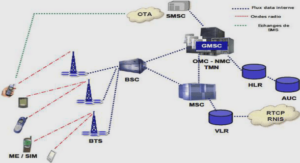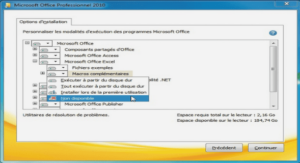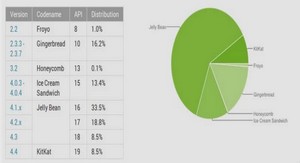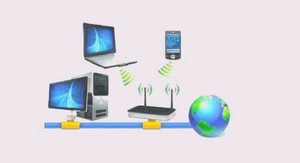Using Cable to Connect to a Central Site Foundation
Topics Cable Access Technologies
Cable access is among the fastest growing technologies for home access to multiple services via a common connection. One connection to the cable company carries the television signal and Internet traffic. Most cable carriers are now getting into the voice market as well by providing voice services with unlimited long distance and other traditional services over the cable connection. The addition of teleworker functionality is a natural extension of this already multiservice connection technology. Today, cable access is typically sold in bundles. These bundles offer a mix of services including television, Internet access, and voice. Most companies also offer a “build your own” bundle for services, to allow a customer to mix and match the solution to meet their needs. Cable Internet access typically is available at speeds ranging from 2-Mbps to 6-Mbps downstream bandwidth (that is, from the Internet to the home) from the average carrier. The cost of this connection is typically bundled with the monthly cable television recurring charge at a discounted rate, as most companies seem to avoid offering Internet access without other services in the bundle, most importantly, television. The concern with downstream speeds versus upstream speeds is relevant simply because the bulk of the traffic load on the connection will be generated by small outbound (from the subscriber) requests returning large amounts of inbound (to the subscriber) data. For example, when a web browser is pointed to http://www.cisco.com, little in the way of traffic is generated by the request. However, a significant amount of information is generated by the reply and subsequent loading of images and information requested. For this reason, service providers have taken an asynchronous view of bandwidth allocation, preferring to focus on the speed of the connection toward the subscriber. Cable Technology Terminology In any discussion of relatively new or different technologies, a definition of terminology associated with that technology is necessary. This allows a more rapid familiarization with the technology. With cable access, the new terms are quite numerous compared with other networking technologies. The following are terms that will be referenced throughout this chapter: ■ Broadband—Data transmission using a multiplexing methodology to provide more efficient use of available bandwidth. In cable, the term broadband refers to the frequency-division multiplexing (FDM) of multiple signals in a wide radio frequency (RF) bandwidth over a 150x01x.book Page 54 Monday, June 18, 2007 8:52 AM Cable Access Technologies 55 hybrid fiber-coaxial (HFC) network and the capability to handle large amounts of information. FDM is a means by which information from multiple channels or frequencies can be allocated bandwidth on a single wire. ■ Community Antenna Television (CATV)—A broad term referring to cable television in general. ■ Coaxial cable—The primary medium used in the construction of cable television systems. Coaxial cable (or coax) is used in the transmission of RF signals and has specific physical characteristics regarding signal attenuation. These characteristics include cable diameter, dielectric construction, ambient temperature, and operating frequency. ■ Tap—A device used to divide the input signal RF power to support multiple outlets. Typically, cable operators deploy taps with two, four, or eight ports. ■ Amplifier—A device that magnifies an input signal, thus producing a significantly larger output signal. ■ Hybrid fiber-coaxial (HFC)—A mixed optical-coaxial network in which fiber optic cable is installed in place of some or all of the traditional trunk portion of the cable network. ■ Downstream—An RF signal transmission traveling in the direction of the subscriber from the headend. Downstream is also called a forward path (viewed from the perspective of the cable provider). ■ Upstream—An RF signal transmission traveling in the direction of the headend from the subscriber. Upstream is also called a return or reverse path (again, from the provider perspective). As most of the general population has lived with cable television for a number of years, the coaxial cable associated with it is quite readily recognized. Obviously, there are many types of coaxial cable available in the marketplace at any given time. Each has differing characteristics and is utilized in a variety of manners and technologies. For example, Ethernet 10BASE2 and 10BASE5 networks used a coaxial cable but each had differing physical and electrical characteristics. Table 3-2 shows the physical differences in some coaxial cable types. Table 3-2 Coaxial Cable Types and Characteristics Specification Cable Type American Wire Gauge (AWG) 10BASE2 Ethernet RG-58 20 10BASE5 Ethernet RG-11 12 CATV cable RG-6 or RG-59 18 150x01x.book Page 55 Monday, June 18, 2007 8:52 AM
Using Cable to Connect to a Central Site Hopefully
the table establishes something of a point of reference for coaxial cable uses. CATV cable is somewhat thick and rigid in comparison to 10BASE2 or Thinnet cable. The 10BASE2 cable is quite flexible and, as the name “Thinnet” implies, quite small in diameter. In general, the thinner the cable, the shorter the functional distance. The use of an HFC network remedies much of the issue caused by cable distance limitations by introducing fiber optic cabling where needed. Cable System Standards Like any networking technology, cable systems have associated standards meant to loosely govern the manner in which the technologies evolve and the manner in which they are implemented by various hardware and software vendors. These standards include ■ National Television Standards Committee (NTSC)—Created in 1941, and named after its authoring committee, NTSC defines technical standards for analog television systems (utilizing a 6-MHz modulated signal) used in North America. ■ Phase Alternating Line (PAL)—A color coding system used in broadcast television throughout Europe, Asia, Africa, Australia, Brazil, and Argentina using a 6-, 7-, or 8-MHz modulated signal. Color differences signal an alternate phase at the horizontal line rate. ■ Système Electronic Couleur avec Memoire (SECAM)—An analog color television system used in France and some other Eastern European countries using an 8-MHz modulated signal. Modulation is the addition of information to an electronic or optical signal carrier. It can be applied to direct current (DC) by turning it on or off, to alternating current (AC), or to optical signals. Signal modulation is a process of varying a waveform to convey a message. The waveform can be changed in amplitude, frequency, phase, or some combination of any or all three to convey these messages. Cable System Components The description of the components associated with cable systems essentially equates to defining additional terminology. Typical components include: ■ Antenna site—A location containing a cable provider’s main receiving and satellite dish facilities. This site is chosen based on potential for optimal reception of transmissions over the air, via satellite, and via point-to-point communication. ■ Headend—A master facility where signals are received, processed, formatted, and distributed over to the cable network. This includes both the transportation and distribution networks. This facility is typically heavily secured and sometimes “lights-out,” meaning that it is not regularly staffed. ■ Transportation network—The means and media by which remote antenna sites are connected to the headend facility. Alternately, this could be a headend facility connection to the distribution network. The transmission media may be microwave, coaxial supertrunk, or fiber optic. 150x01x.book Page 56 Monday, June 18, 2007 8:52 AM Cable Access Technologies 57 ■ Distribution network—In typical cable system architectures, consists of trunk and feeder cables. The trunk is the backbone cable (usually 0.75-inch diameter) over which the primary connectivity is maintained. In many networks, the distribution network tends to be a hybrid fiber-coaxial network. ■ Node—Performs optical-to-RF conversion of CATV signal as needed. Feeder cables (typically 0.5-inch diameter) originate from nodes that branch off into individual communities to provide services to anywhere between 100 and 2000 customers each. ■ Subscriber drop—Connects the subscriber to the cable service network via a connection between the feeder portion of a distribution network and the subscriber terminal device (for example, TV set, VCR, high-definition TV set-top box, or cable modem). The subscriber drop components consist of the physical coaxial cabling, grounding and attachment hardware, passive devices, and a set-top box. These components tend to be relatively easy to understand in concept. In practice, these are implemented in differing manners depending on the cable provider. Regardless of the chosen architecture, the concepts remain the same. Figure 3-1 illustrates typical cable provider architecture.




